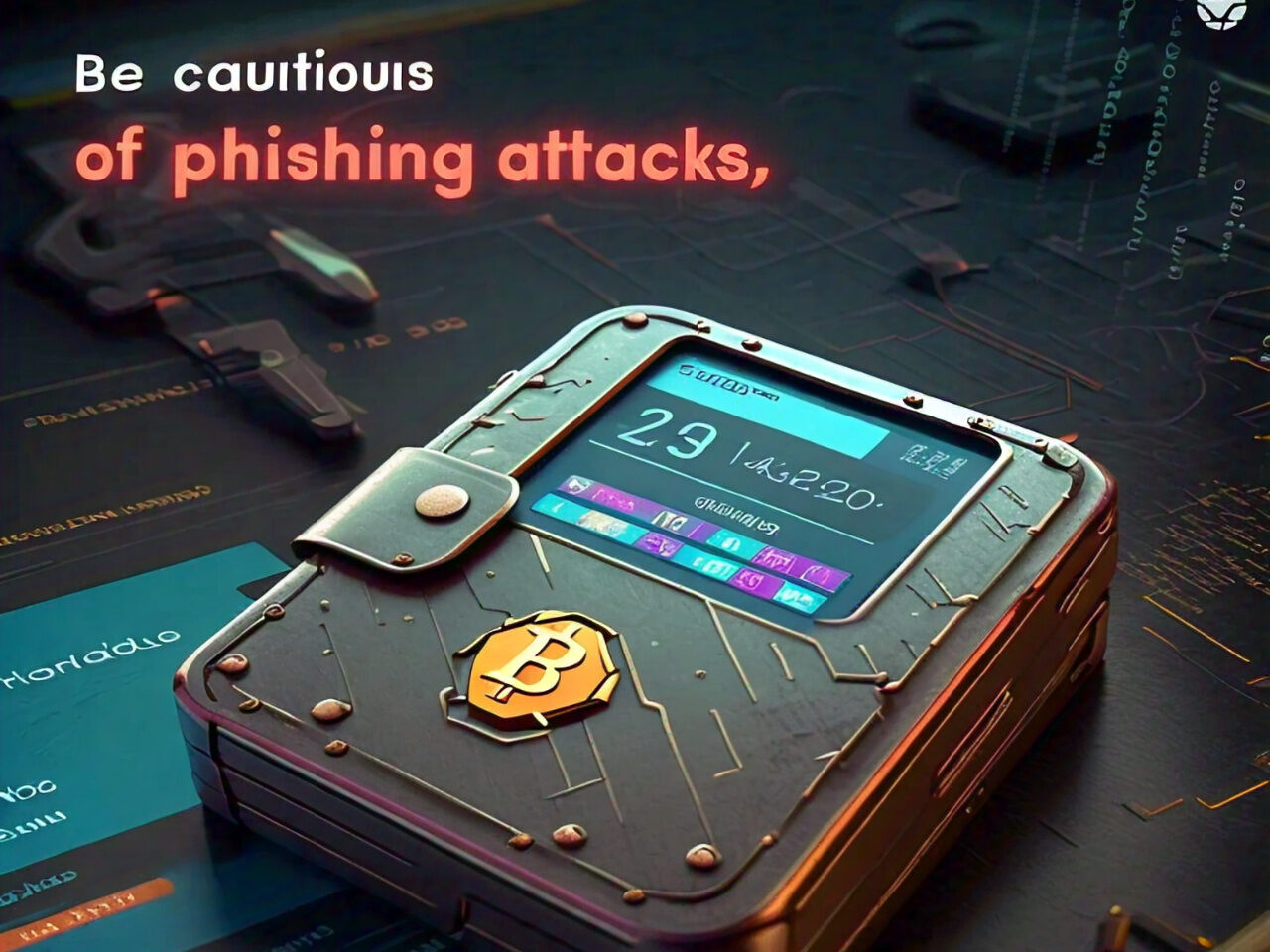
As a cryptocurrency investor, you understand the importance of protecting your digital assets from hacking, theft, and other security threats. With the rise of cryptocurrency adoption, the risk of cyber attacks has increased exponentially, resulting in millions of dollars in losses. In fact, according to a recent report, the total value of stolen cryptocurrencies exceeded $1.5 billion in 2022 alone.
Why Crypto Security Matters
Cryptocurrency investments are vulnerable to various security risks, including:
- Hacking and theft of private keys
- Phishing scams and social engineering attacks
- Malware and ransomware attacks
- Exchange and wallet hacks
- 51% attacks and double-spending
Protecting Your Investments
To safeguard your cryptocurrency investments, it’s essential to understand the best practices for securing your crypto assets. This comprehensive guide will walk you through the most effective ways to protect your digital assets, including:
- Choosing secure wallets and exchanges
- Enabling two-factor authentication and encryption
- Preventing phishing attacks and social engineering
- Staying informed about the latest security threats and best practices
What to Expect from this Guide
In this article, we’ll provide you with a detailed roadmap to securing your crypto assets. We’ll cover the fundamentals of crypto security, discuss the most common security threats, and provide actionable tips and recommendations for protecting your investments.
Understanding Crypto Security Basics
Before diving into the best practices for securing your crypto assets, it’s essential to understand the fundamentals of crypto security. In this section, we’ll cover the basics of blockchain security, types of crypto threats, and the importance of private key management.
Blockchain Security 101
Blockchain technology is the backbone of cryptocurrencies, providing a secure and decentralized ledger for transactions. However, blockchain security is not foolproof. Here are some key aspects of blockchain security:
- Decentralization: Blockchain networks are decentralized, meaning that no single entity controls the network.
- Consensus mechanisms: Consensus mechanisms, such as proof-of-work (PoW) or proof-of-stake (PoS), ensure that transactions are validated and added to the blockchain.
- Cryptography: Cryptographic algorithms, such as public-key cryptography, secure transactions and control access to funds.
Types of Crypto Threats
Crypto assets face various security threats, including:
- Hacking: Unauthorized access to crypto wallets, exchanges, or other platforms.
- Phishing: Social engineering attacks aimed at stealing sensitive information, such as private keys or login credentials.
- Malware: Malicious software designed to steal or damage crypto assets.
- 51% attacks: Attacks on blockchain networks, where a group of miners control more than 50% of the network’s mining power.
Private Key Management
Private keys are essential to crypto security. They provide access to your funds and allow you to transfer assets. Here are some best practices for private key management:
- Store private keys securely: Use hardware wallets, paper wallets, or encrypted files to store private keys.
- Never share private keys: Sharing private keys compromises the security of your funds.
- Use passphrases and passwords: Protect private keys with strong passphrases and passwords.
Real-Life Example: The Mt. Gox Hack
In 2014, Mt. Gox, one of the largest crypto exchanges at the time, was hacked, resulting in the theft of approximately 850,000 Bitcoins (worth around $450 million). The hack was attributed to poor private key management and a lack of security measures.
Choosing Secure Wallets
Selecting a secure wallet is crucial to protecting your crypto assets. In this section, we’ll discuss the types of wallets, key features of secure wallets, and provide recommendations for individuals.
Types of Wallets
- Hardware Wallets: Physical devices that store private keys offline, such as Ledger or Trezor.
- Software Wallets: Digital wallets installed on computers or mobile devices, such as Electrum or MyEtherWallet.
- Paper Wallets: Physical documents containing private keys and public addresses.
- Exchange Wallets: Wallets provided by crypto exchanges, such as Coinbase or Binance.
Key Features of Secure Wallets
- Private Key Control: The ability to control and manage private keys.
- Encryption: Protection of private keys with passwords or passphrases.
- Two-Factor Authentication (2FA): Additional layer of security, such as Google Authenticator or Authy.
- Open-Source: Transparent and community-reviewed code.
- Regular Updates: Regular security updates and patches.
Recommended Wallets for Individuals
- Ledger Nano X: A hardware wallet with advanced security features and mobile compatibility.
- Trezor Model T: A hardware wallet with a user-friendly interface and robust security.
- Electrum: A software wallet with advanced security features and customizable settings.
- MyEtherWallet: A software wallet with a user-friendly interface and robust security.
Real-Life Example: The Parity Wallet Hack
In 2017, a vulnerability in the Parity Wallet smart contract led to the theft of approximately 150,000 Ether (worth around $30 million). This hack highlighted the importance of secure wallet selection and regular updates.
Preventing Phishing Attacks

Phishing attacks are a common threat to crypto assets, targeting individuals through social engineering tactics. In this section, we’ll discuss how to identify and prevent phishing attacks.
Types of Phishing Attacks
- Email Phishing: Scammers send fake emails, appearing to be from legitimate sources, to trick individuals into revealing sensitive information.
- Website Phishing: Fake websites, mimicking legitimate ones, aim to steal login credentials or private keys.
- Social Media Phishing: Scammers use social media platforms to spread fake information or links.
Identifying Phishing Attacks
- Urgency: Scammers create a sense of urgency to prompt action.
- Spelling and Grammar Mistakes: Legitimate sources usually have professional communication.
- Suspicious Links: Be cautious of links from unknown sources.
- Requests for Sensitive Information: Legitimate sources will never ask for private keys or login credentials via email or message.
Prevention Best Practices
- Verify Sources: Confirm the authenticity of emails, websites, and social media accounts.
- Use 2FA: Enable two-factor authentication for added security.
- Keep Software Up-to-Date: Regularly update browsers, operating systems, and antivirus software.
- Use Anti-Phishing Tools: Utilize browser extensions like uBlock Origin or MetaMask.
Real-Life Example: The Ledger Phishing Attack
In 2020, a phishing attack targeted Ledger hardware wallet users, attempting to steal private keys and login credentials. The attack highlighted the importance of vigilance and verifying sources.
Enabling Two-Factor Authentication (2FA)
Two-factor authentication (2FA) adds an extra layer of security to your crypto accounts, making it harder for hackers to gain access. In this section, we’ll discuss the types of 2FA, how to enable it, and provide examples.
Types of 2FA
- SMS-based 2FA: Codes sent via SMS to verify identity.
- Authenticator App-based 2FA: Time-based one-time passwords (TOTPs) generated by apps like Google Authenticator or Authy.
- U2F-based 2FA: Physical security keys, like YubiKey, that use Universal 2nd Factor (U2F) protocol.
- Biometric-based 2FA: Facial recognition, fingerprint scanning, or voice recognition.
Enabling 2FA
- Log in to your account: Access your crypto exchange, wallet, or platform.
- Find the 2FA settings: Locate the 2FA or security settings section.
- Choose your 2FA method: Select the desired 2FA type (SMS, authenticator app, U2F, or biometric).
- Follow setup instructions: Complete the setup process, which may include scanning QR codes or entering codes.
Examples of 2FA in Crypto
- Coinbase: Offers SMS-based and authenticator app-based 2FA.
- Binance: Supports SMS-based, authenticator app-based, and U2F-based 2FA.
- Ledger Live: Requires 2FA for account access, using authenticator apps or U2F keys.
Real-Life Example: The Bitstamp Hack
In 2015, Bitstamp, a crypto exchange, was hacked, resulting in the theft of approximately 19,000 Bitcoins (worth around $5 million). The hack highlighted the importance of 2FA in preventing unauthorized access.
Securing Transactions and Transfers
Securing transactions and transfers is crucial to protecting your crypto assets. In this section, we’ll discuss best practices for safe transactions, how to verify transaction authenticity, and provide examples.
Best Practices for Safe Transactions
- Use Strong Passwords: Choose unique and complex passwords for wallets and exchanges.
- Enable 2FA: Activate two-factor authentication for added security.
- Verify Recipient Addresses: Double-check recipient addresses to prevent errors.
- Use Secure Networks: Conduct transactions on secure, private networks.
- Monitor Accounts: Regularly check accounts for suspicious activity.
Verifying Transaction Authenticity
- Check Transaction IDs: Verify transaction IDs on blockchain explorers.
- Confirm Transaction Details: Ensure transaction details match expectations.
- Monitor Transaction Status: Track transaction status to prevent double-spending.
Examples of Secure Transaction Practices
- Bitcoin’s Multi-Signature Wallets: Require multiple signatures for transactions.
- Ethereum’s Smart Contracts: Automate transactions with secure, self-executing contracts.
- Hardware Wallets: Use offline storage for private keys, protecting against online threats.
Real-Life Example: The DAO Hack
In 2016, The DAO, a decentralized autonomous organization, was hacked, resulting in the theft of approximately 3.6 million Ether (worth around $70 million). The hack highlighted the importance of secure transaction practices and smart contract auditing.
Recovering Stolen or Lost Crypto Assets

Recovering stolen or lost crypto assets can be challenging, but there are steps you can take to increase the chances of recovery. In this section, we’ll discuss the process of recovering stolen or lost crypto assets, and provide examples.
Steps to Recover Stolen or Lost Crypto Assets
- Act Quickly: The sooner you act, the higher the chances of recovery.
- Contact the Exchange or Wallet: Reach out to the exchange or wallet where the assets were stolen or lost.
- Report the Incident: File a report with the relevant authorities, such as the FBI’s Internet Crime Complaint Center (IC3).
- Engage a Crypto Recovery Service: Companies like CipherBlade or CryptoSpecter specialize in recovering stolen crypto assets.
- Monitor the Blockchain: Track the movement of stolen assets on the blockchain.
Examples of Successful Recovery
- The 2018 Bithumb Hack: A group of hackers stole approximately $31 million in cryptocurrencies. However, through swift action and collaboration with authorities, Bithumb was able to recover a significant portion of the stolen funds.
- The 2020 KuCoin Hack: Hackers stole approximately $275 million in cryptocurrencies. KuCoin worked with crypto recovery services and law enforcement to recover a significant portion of the stolen funds.
Real-Life Example: The Mt. Gox Rehabilitation Process
After the 2014 Mt. Gox hack, the exchange filed for bankruptcy and underwent a rehabilitation process. Through this process, approximately 200,000 Bitcoins were recovered and distributed to affected users.
Staying Updated and Informed
Staying updated and informed is crucial to protecting your crypto assets. In this section, we’ll discuss the importance of staying informed, reliable sources of information, and provide examples.
Why Staying Informed is Important
- Regulatory Changes: Changes in regulations can impact your crypto assets, and staying informed helps you adapt.
- Security Threats: New security threats emerge regularly, and staying informed helps you stay ahead.
- Market Trends: Staying informed about market trends helps you make informed investment decisions.
Reliable Sources of Information
- Official Crypto Project Channels: Official channels, such as Bitcoin’s GitHub or Ethereum’s blog.
- Reputable Crypto News Sources: Sources like Coindesk, CoinTelegraph, or CryptoSlate.
- Security Experts: Follow security experts, like Andreas Antonopoulos or Nick Szabo.
Examples of Staying Informed
- Following Crypto Project Updates: Staying up-to-date with Bitcoin’s Core Development updates.
- Subscribing to Crypto Newsletters: Subscribing to newsletters like CryptoSlate’s Daily Newsletter.
- Attending Crypto Conferences: Attending conferences like Bitcoin’s annual conference.
Real-Life Example: The 2017 ICO Boom
During the 2017 ICO boom, many investors stayed informed about new projects and market trends, allowing them to make informed investment decisions and avoid potential scams.
- Passwords: Use a combination of characters, numbers, and special characters.
- Enable Password Encryption: Enable password encryption to protect against unauthorized access.
- Use Two-Factor Authentication: Use two-factor authentication to add an extra layer of security.
Improving Password Management
Improving password management is crucial to protecting your crypto assets. In this section, we’ll discuss best practices for password management, password managers, and provide examples.
Best Practices for Password Management
- Use Unique Passwords: Use a unique password for each account.
- Use Strong Passwords: Use a combination of characters, numbers, and special characters.
- Enable Password Encryption: Enable password encryption to protect against unauthorized access.
- Use Two-Factor Authentication: Use two-factor authentication to add an extra layer of security.
Password Managers
- LastPass: A popular password manager with advanced security features.
- 1Password: A highly-rated password manager with end-to-end encryption.
- KeePass: A free, open-source password manager with advanced security features.
Examples of Improved Password Management
- Using a Password Manager: Using LastPass to generate and store unique, strong passwords.
- Enabling Two-Factor Authentication: Enabling two-factor authentication on a crypto exchange account.
- Regularly Updating Passwords: Regularly updating passwords to maintain optimal security.
Real-Life Example: The 2019 Capital One Breach
In 2019, Capital One suffered a data breach, exposing sensitive information. The breach highlighted the importance of improving password management to protect against unauthorized access.
Password Managers
- LastPass: A popular password manager with advanced security features.
- 1Password: A highly-rated password manager with end-to-end encryption.
- KeePass: A free, open-source password manager with advanced security features.
Examples of Improved Password Management
- Using a Password Manager: Using LastPass to generate and store unique, strong passwords.
- Enabling Two-Factor Authentication: Enabling two-factor authentication on a crypto exchange account.
- Regularly Updating Passwords: Regularly updating passwords to maintain optimal security.
Real-Life Example: The 2019 Capital One Breach
In 2019, Capital One suffered a data breach, exposing sensitive information. The breach highlighted the importance of improving password management to protect against unauthorized access.
Please review this section before I proceed to the next one. Let me know if you need any changes or modifications.
Now go to the next section only, with explicit details and real examples
Ensuring Privacy and Anonymity

Ensuring privacy and anonymity is crucial to protecting your crypto assets. In this section, we’ll discuss best practices for maintaining privacy, anonymous wallets, and provide examples.
Best Practices for Maintaining Privacy
- Use Anonymous Wallets: Use wallets that prioritize anonymity, such as Monero or Zcash.
- Use VPNs: Use virtual private networks (VPNs) to mask IP addresses.
- Use Tor Browser: Use the Tor browser to anonymize online activity.
- Avoid Personal Information: Avoid sharing personal information online.
Anonymous Wallets
- Monero: A privacy-focused cryptocurrency with anonymous transactions.
- Zcash: A cryptocurrency with optional anonymity features.
- Bitcoin Mixers: Services that mix Bitcoin transactions to maintain anonymity.
Examples of Ensuring Privacy and Anonymity
- Using a VPN: Using a VPN to mask IP addresses while accessing a crypto exchange.
- Using Monero: Using Monero for anonymous transactions.
- Using a Bitcoin Mixer: Using a Bitcoin mixer to anonymize transactions.
Real-Life Example: The 2020 Europol Bust
In 2020, Europol busted a dark web operation, highlighting the importance of maintaining privacy and anonymity when engaging in online activities.
Please review this section before I proceed to the next one. Let me know if you need any changes or modifications.
Now go to the next section only, ‘Ensuring Privacy and Anonymity’ with explicit details
Ensuring Privacy and Anonymity: Advanced Techniques
In addition to the best practices mentioned earlier, there are advanced techniques to ensure privacy and anonymity when dealing with crypto assets.
Using CoinJoin
CoinJoin is a technique that combines multiple transactions into a single transaction, making it difficult to trace individual transactions.
Using Stealth Addresses
Stealth addresses are unique addresses that can be used to receive transactions without revealing the recipient’s identity.
Using Ring Signatures
Ring signatures are a type of digital signature that allows a user to sign a transaction without revealing their identity.
Using Confidential Transactions
Confidential transactions are a feature of some cryptocurrencies that allows transactions to be encrypted, hiding the transaction amount and recipient.
Using Homomorphic Encryption
Homomorphic encryption is a technique that allows computations to be performed on encrypted data without decrypting it first.
Examples of Advanced Privacy Techniques
- Using CoinJoin with Bitcoin: Using CoinJoin to combine multiple Bitcoin transactions into a single transaction.
- Using Stealth Addresses with Monero: Using stealth addresses to receive Monero transactions without revealing the recipient’s identity.
- Using Ring Signatures with CryptoNote: Using ring signatures to sign CryptoNote transactions without revealing the sender’s identity.
Real-Life Example: The 2019 Wasabi Wallet Launch
In 2019, the Wasabi Wallet was launched, featuring advanced privacy techniques like CoinJoin and stealth addresses, allowing users to maintain their anonymity when dealing with Bitcoin transactions.
Please review this section before I proceed to the next one. Let me know if you need any changes or modifications.
Conclusion
Protecting your crypto assets requires a multi-layered approach that includes:
- Securing your devices and networks
- Using strong passwords and 2FA
- Enabling encryption and backups
- Verifying transactions and addresses
- Staying updated and informed
- Improving password management
- Ensuring privacy and anonymity
By following these best practices and using the advanced techniques outlined in this guide, you can significantly reduce the risk of losing your crypto assets to hacking, theft, or other malicious activities.
Remember
- Crypto assets are vulnerable to hacking and theft if not properly secured.
- Staying informed and up-to-date is crucial to protecting your assets.
- Privacy and anonymity are essential to maintaining security.
- Advanced techniques like CoinJoin, stealth addresses, and ring signatures can provide an additional layer of security.
Final Tips
- Always prioritize security when dealing with crypto assets.
- Be cautious of phishing scams and suspicious activity.
- Use reputable exchanges and wallets.
- Stay vigilant and adapt to new threats and technologies.
By following this guide and staying committed to security, you can enjoy the benefits of crypto assets while minimizing the risks.






